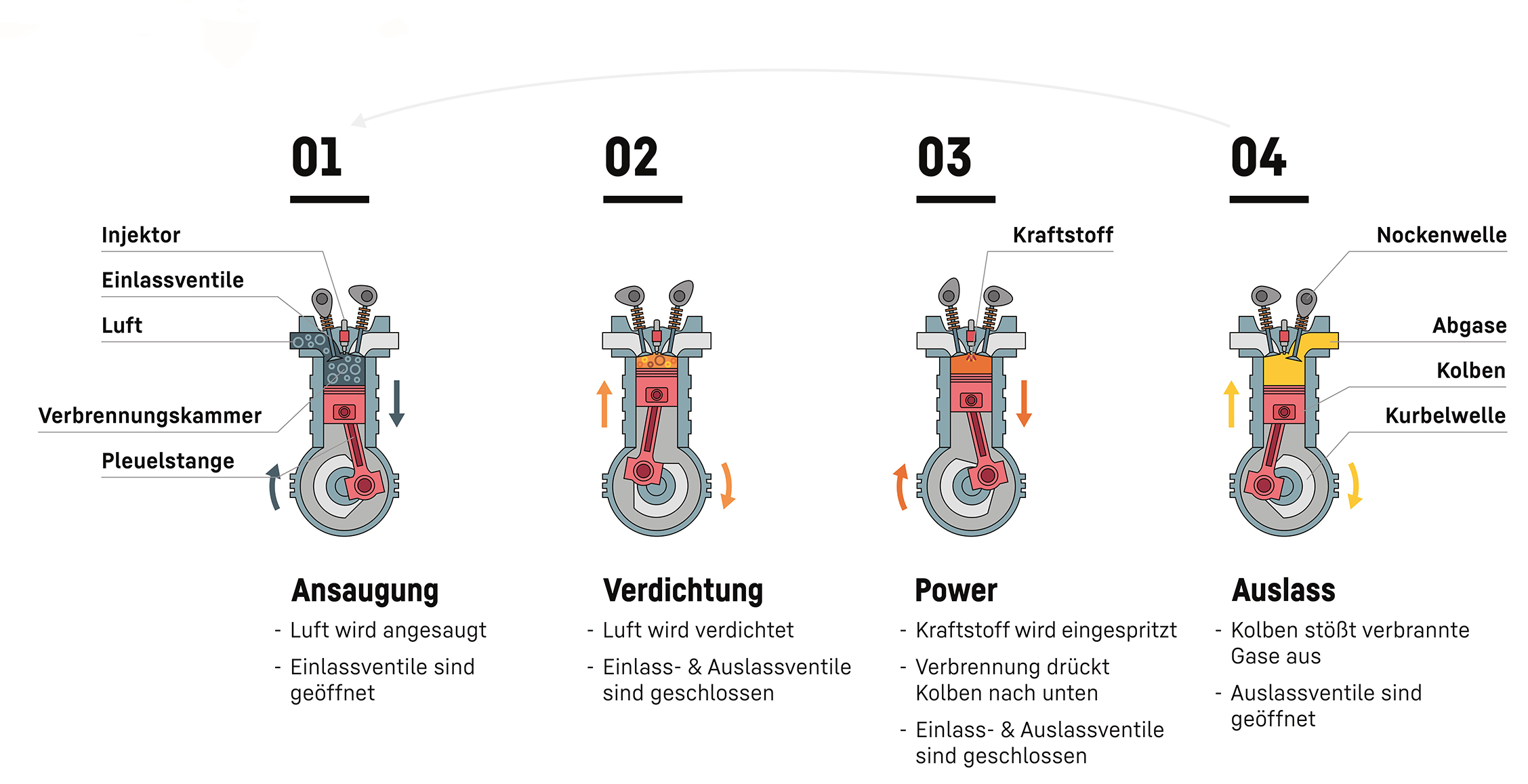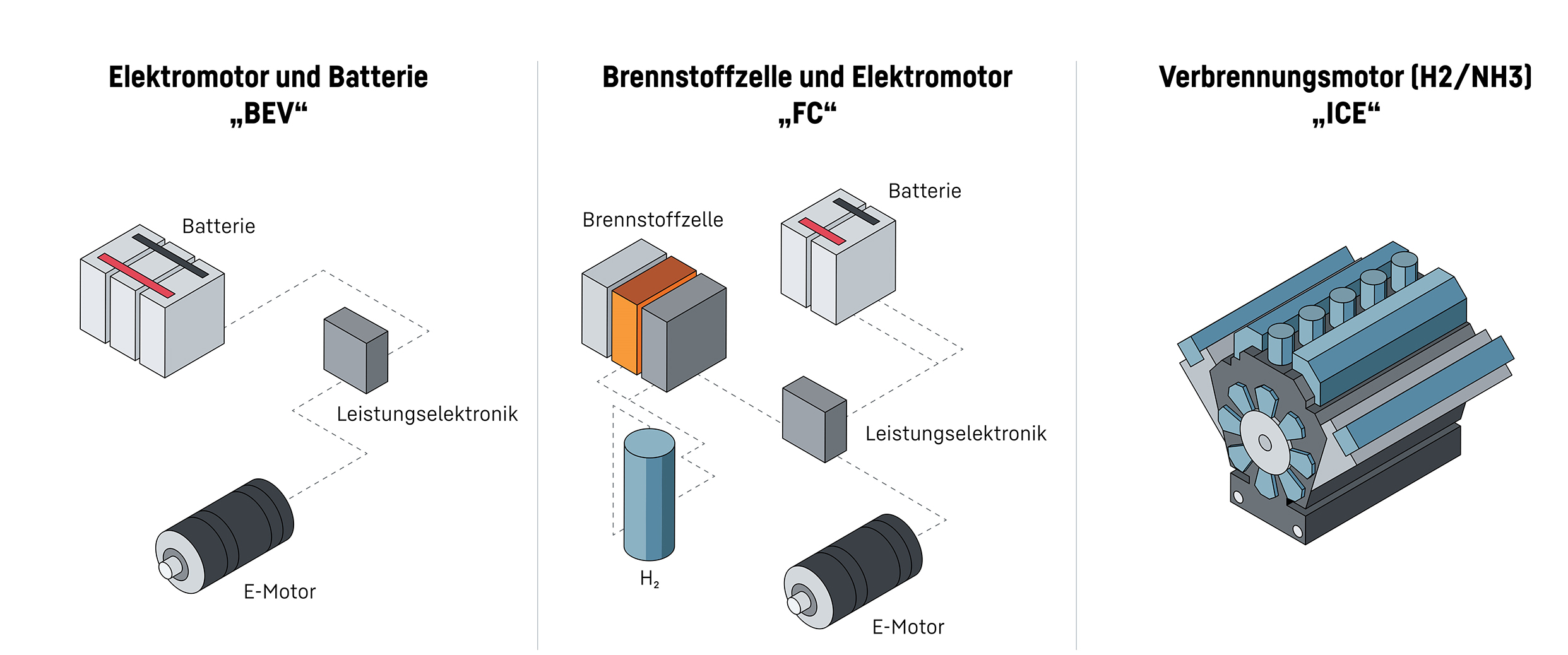The combustion engine – ready for conventional and alternative fuels
The internal combustion engine (ICE) has been powering a wide variety of stationary and mobile applications since the 19th century. In four steps or cycles, it converts chemical energy into mechanical work by burning a fuel inside its combustion chamber. This technology is particularly suitable for industries and applications requesting high power density, flexibility, reliability, and easy serviceability, in addition to working in harsh environments like earthmoving, construction and mining.
However, when running with diesel, internal combustion engines emit greenhouse gases. These can be reduced, compensated or even avoided e.g. by replacing diesel with renewable fuels produced from sustainable energy sources – provided that they are readily available on the construction site and that the power train can offer a similar power density as the diesel version. The wide range of applications served by diesel-powered machinery today makes it highly probable that there will not be one single alternative fuel that will replace diesel in the future.
When studying the use of various alternative fuels, the Group’s Swiss and French centres of excellence for engine development, Liebherr Machines Bulle SA and Liebherr-Components Colmar, are following a technology-neutral approach. As a first step, both companies already started using biofuels a few years ago, which was closely followed last year by the release of HVO, enabling a reduction of greenhouse gas emissions by up to 90 %. Moreover, synthetic fuels based on renewable energy sources can already save up to 100% CO2. “Today, our customers’ existing fleets are almost exclusively powered by diesel engines. They can refuel their machines with HVO or, in the future, with e-fuels, and thus save emissions without having to replace their fleet,” explains Ulrich Weiss, Managing Director for Research and Development of Combustion Engines at Liebherr Machines Bulle SA.
Liebherr currently develops hydrogen injection systems, as well as complete hydrogen combustion engines, which are planned to be ready for serial production starting from 2025. A demonstration model, the H966, will be presented at Bauma 2022 as part of the R 9XX H2 crawler excavator. Other fuels, such as ammonia and methanol, are seen as promising, given their higher energy density and carbon neutrality as compared to H2. In future, the experience gained from the development and field trials of the hydrogen engine will bring significant benefits to the further development of engines based on specific alternative fuels, or a combination of fuels.





